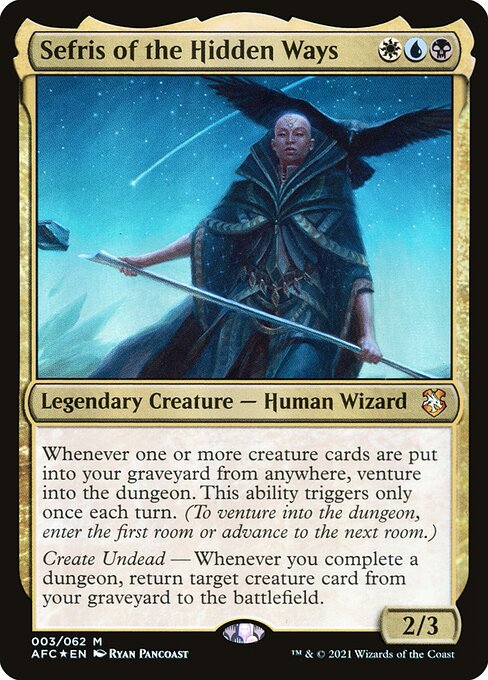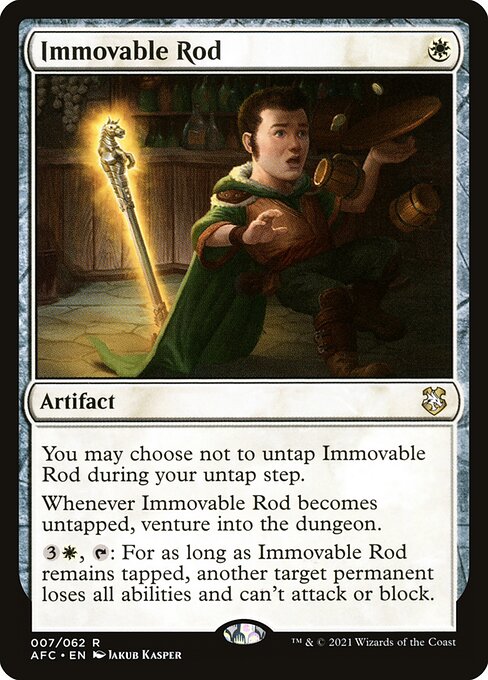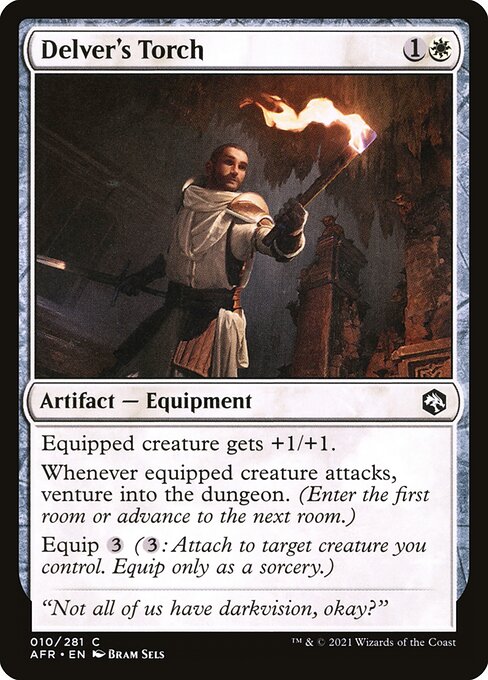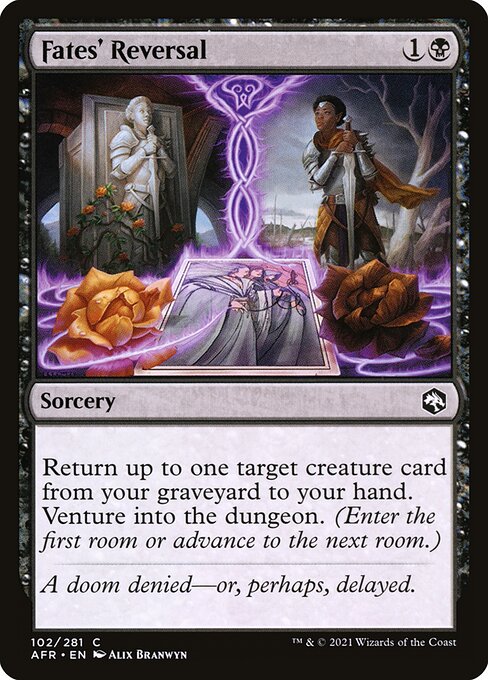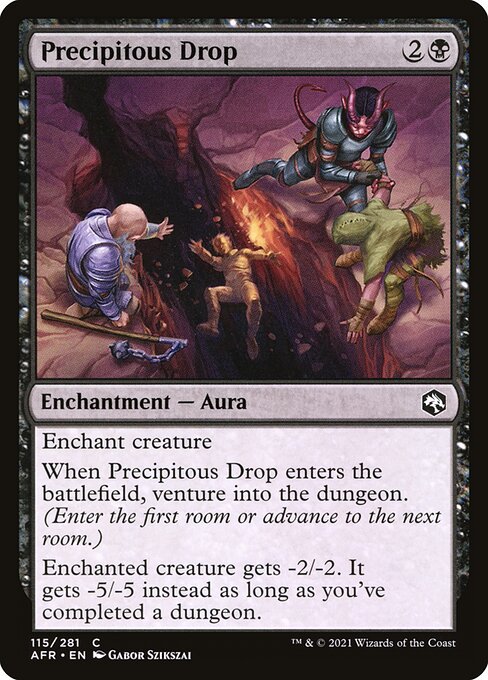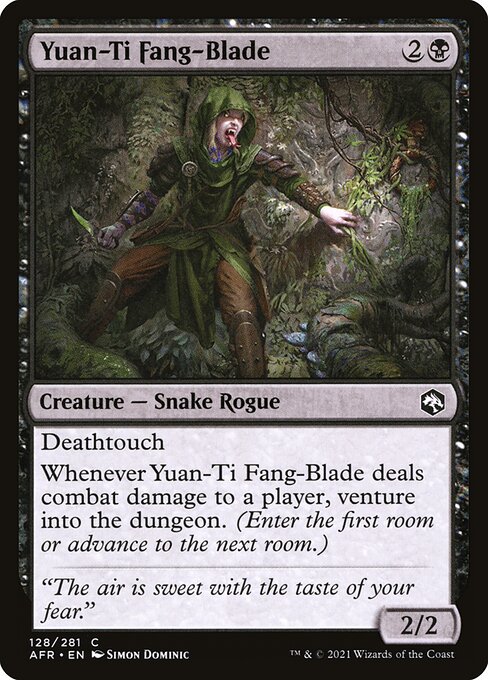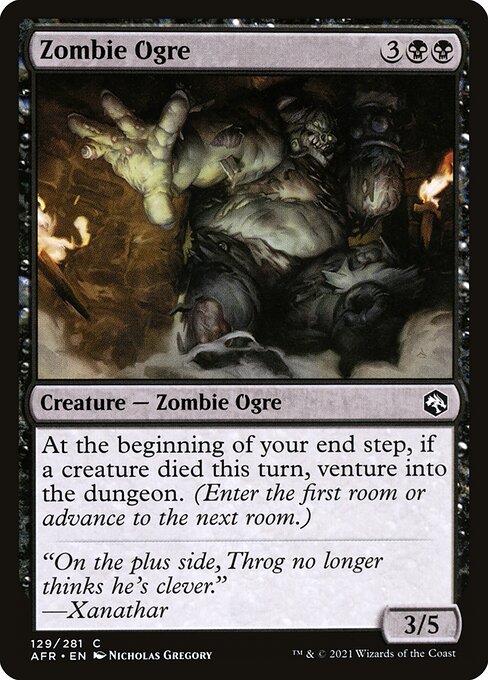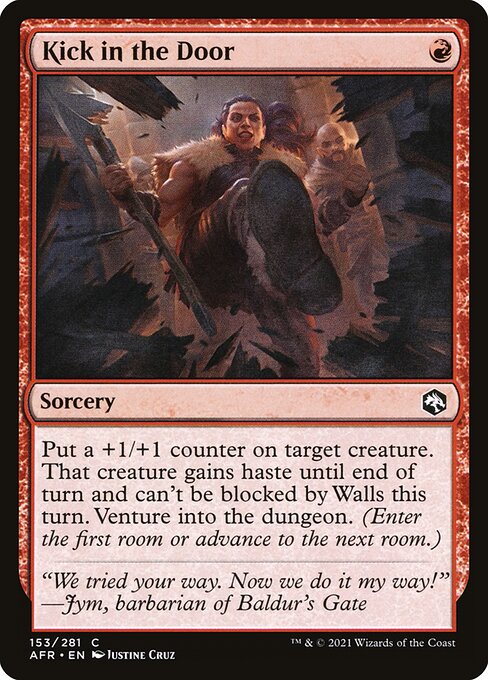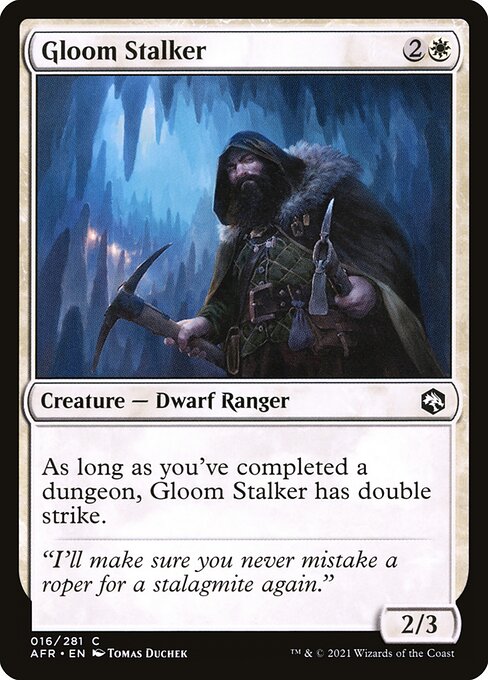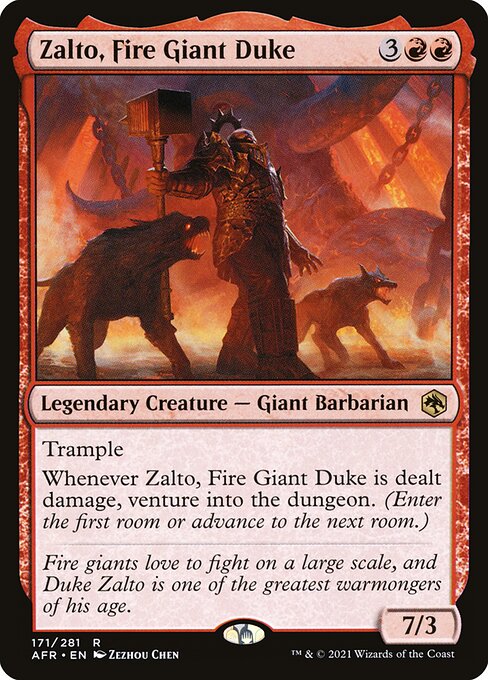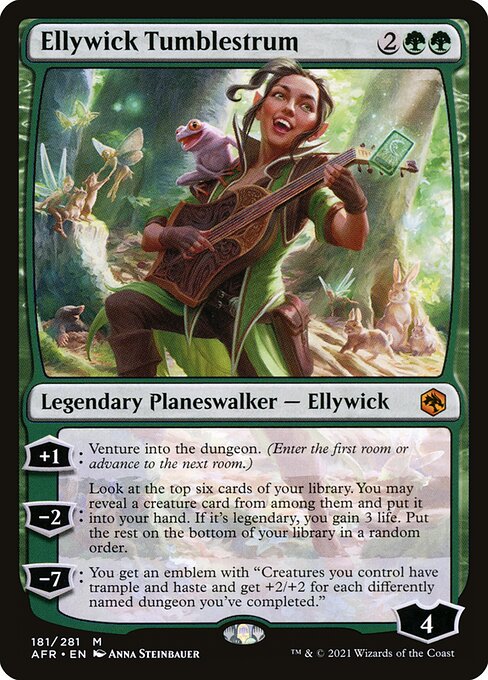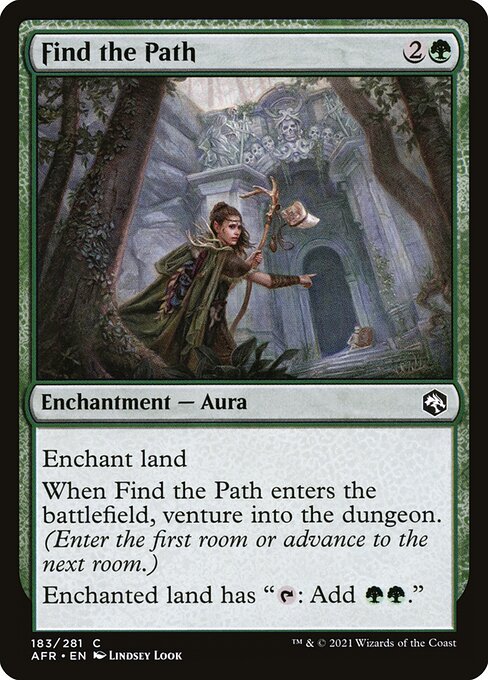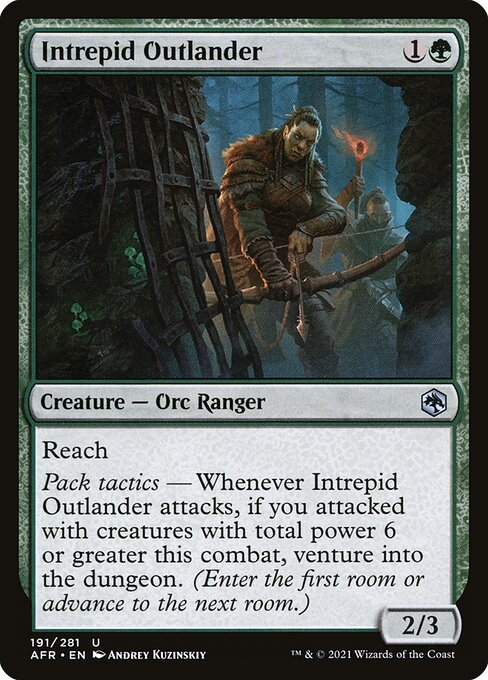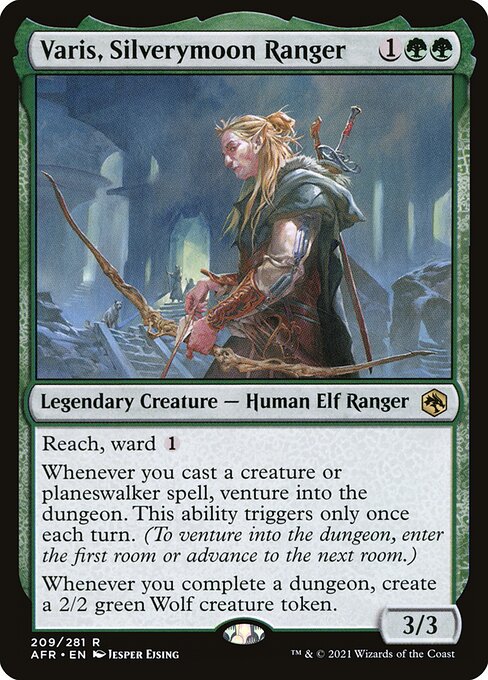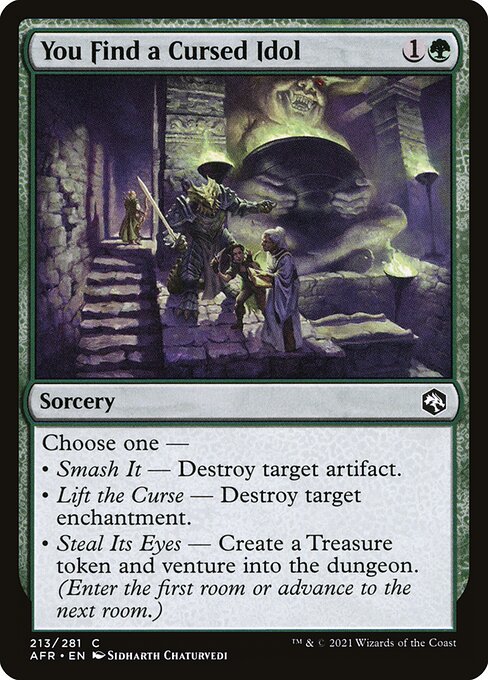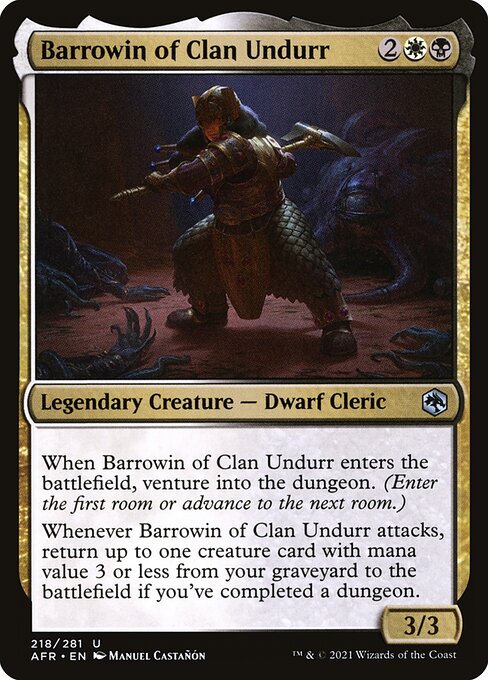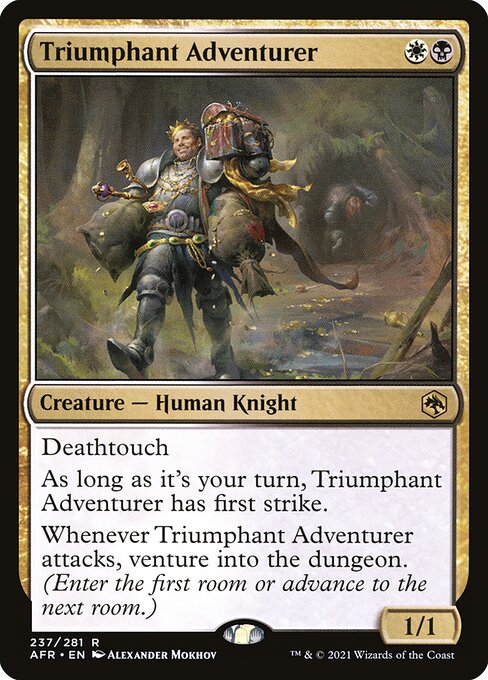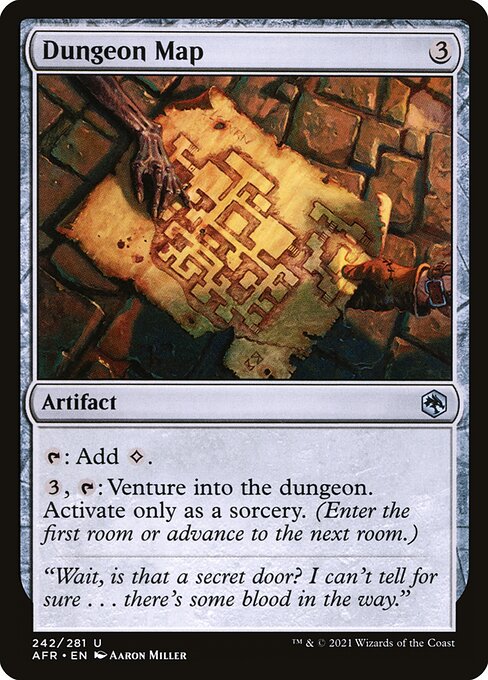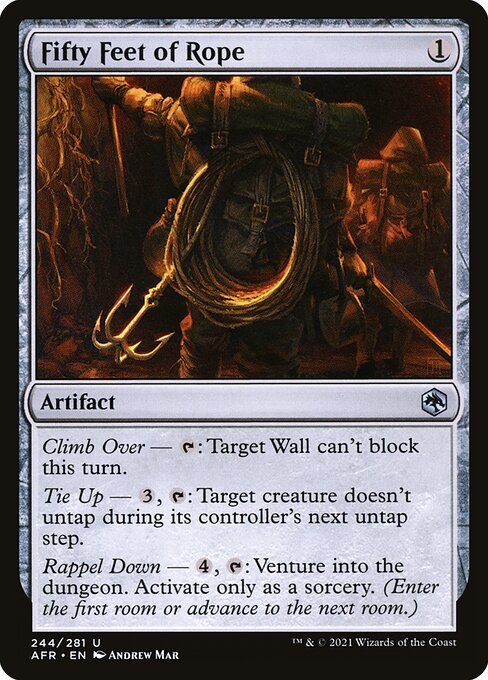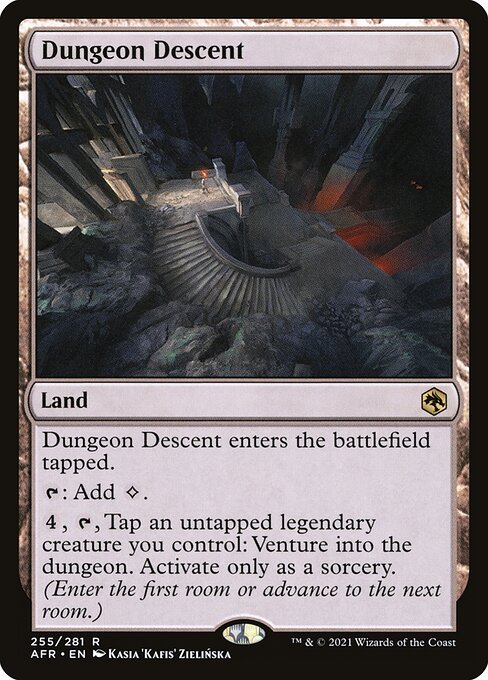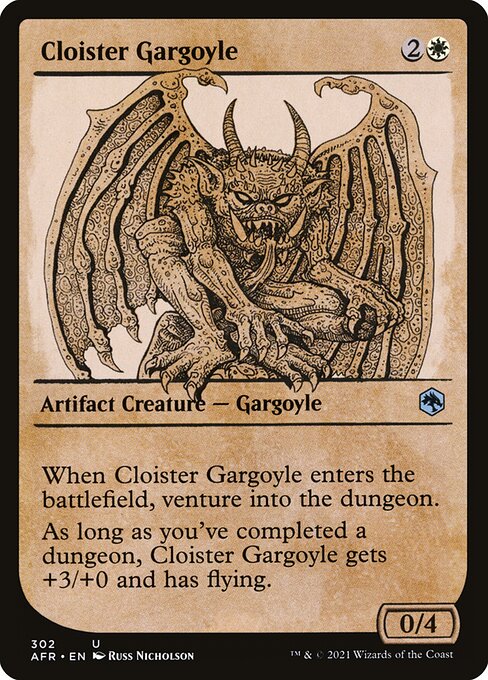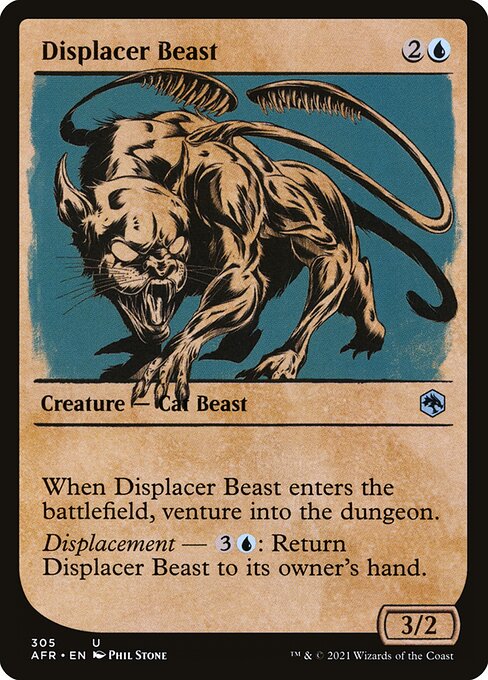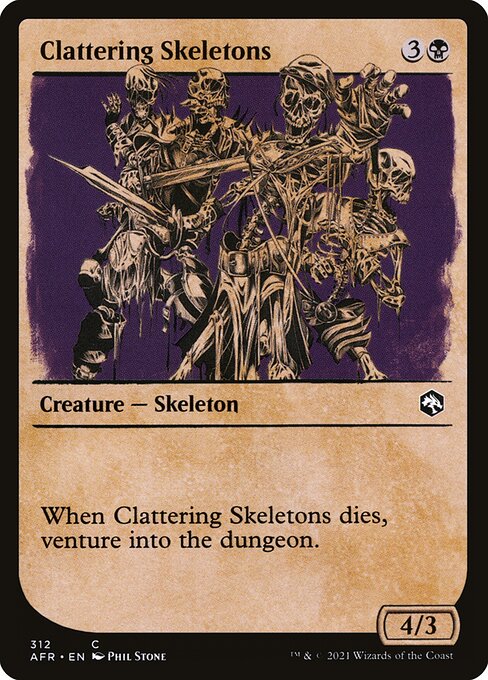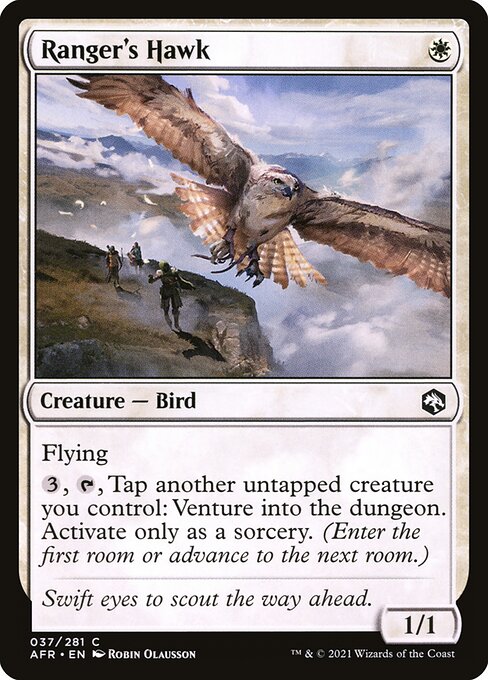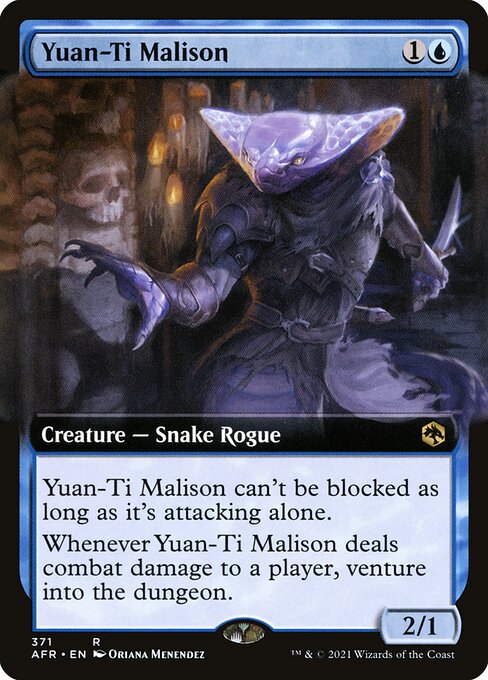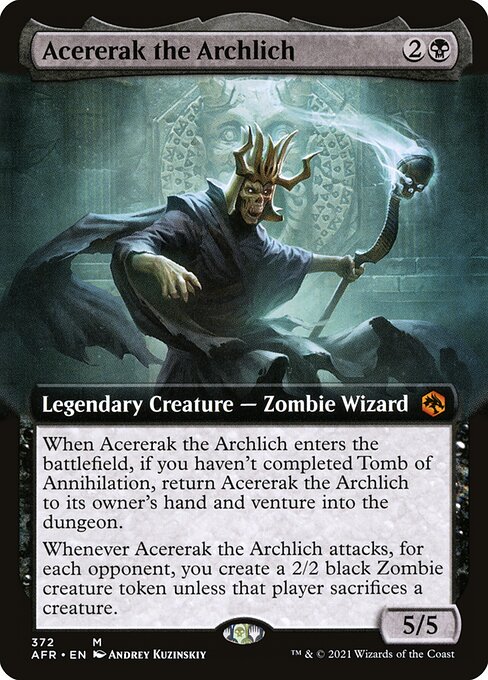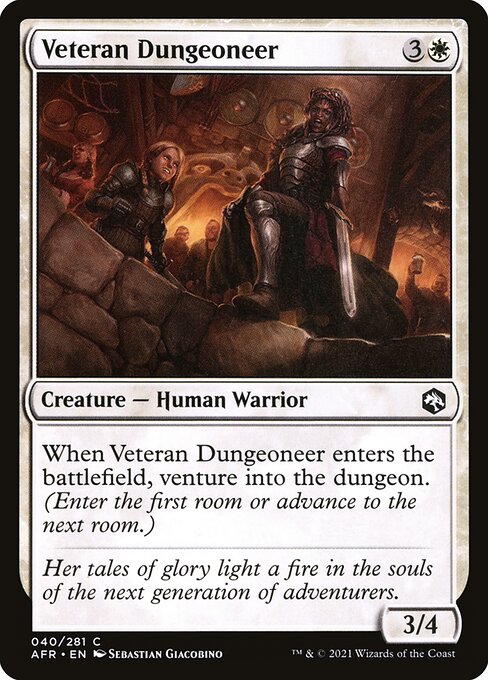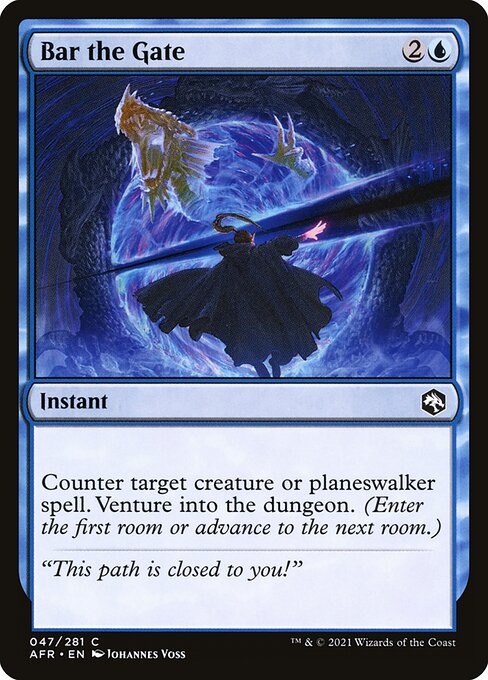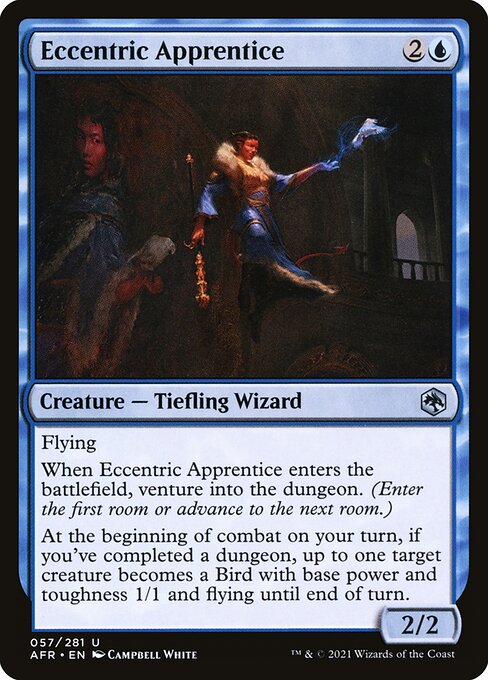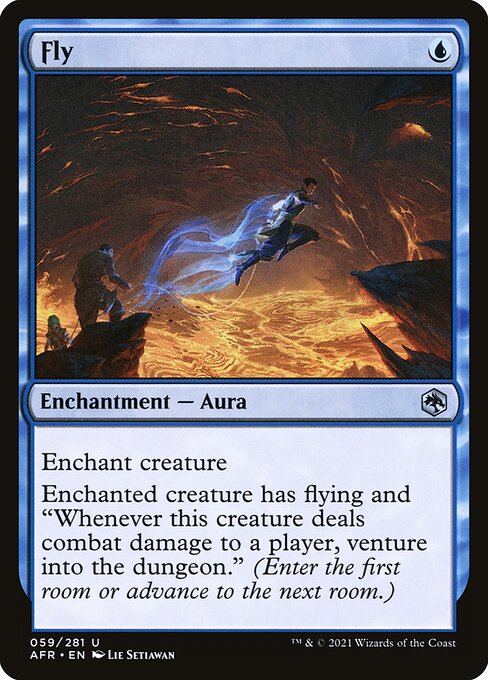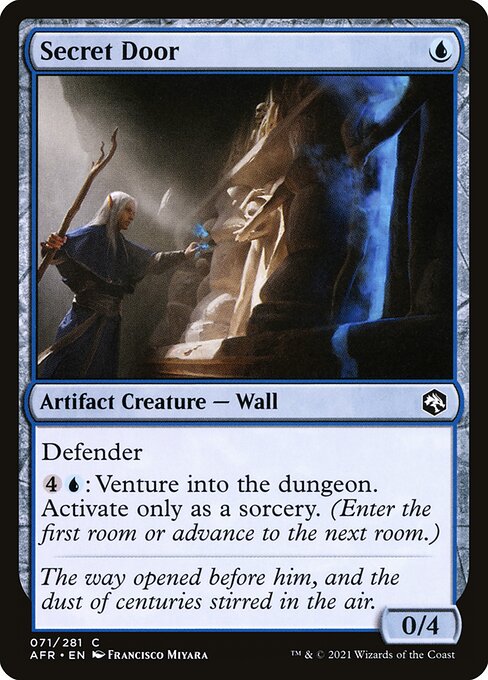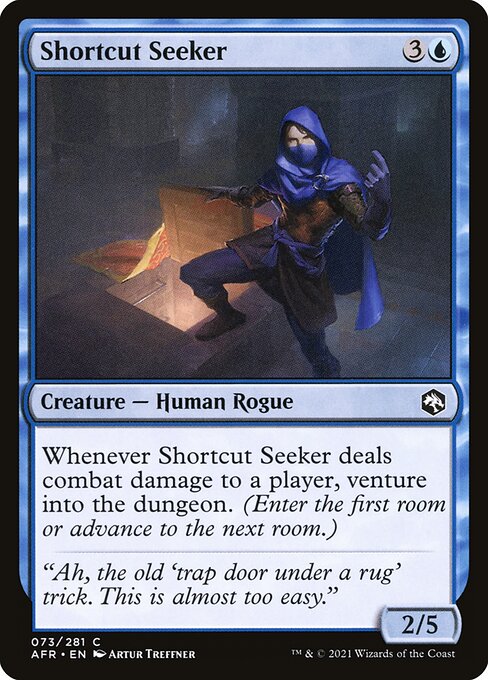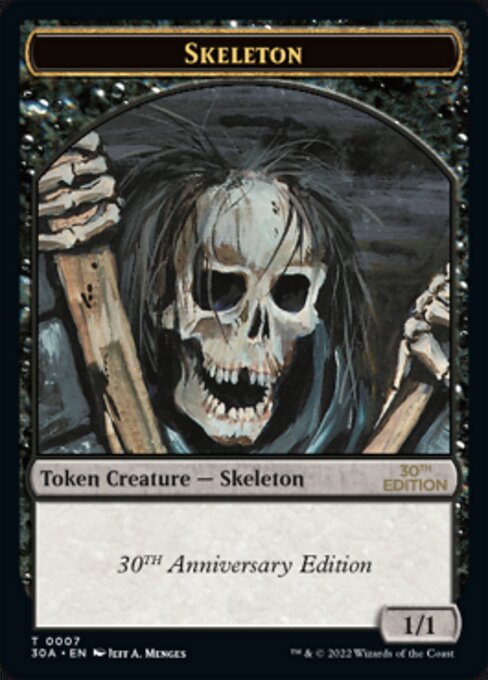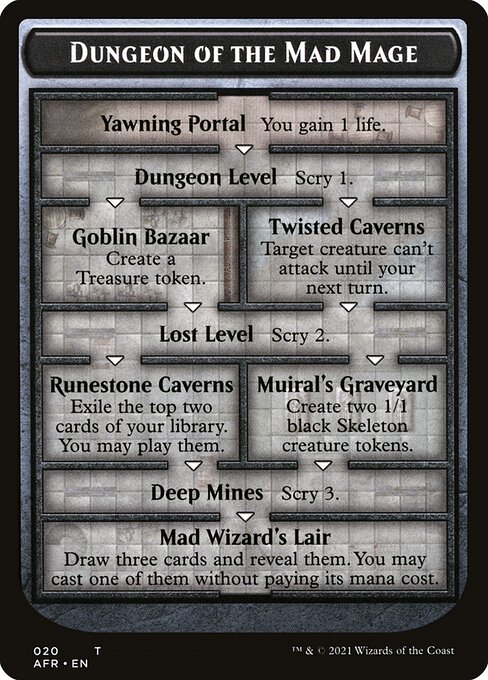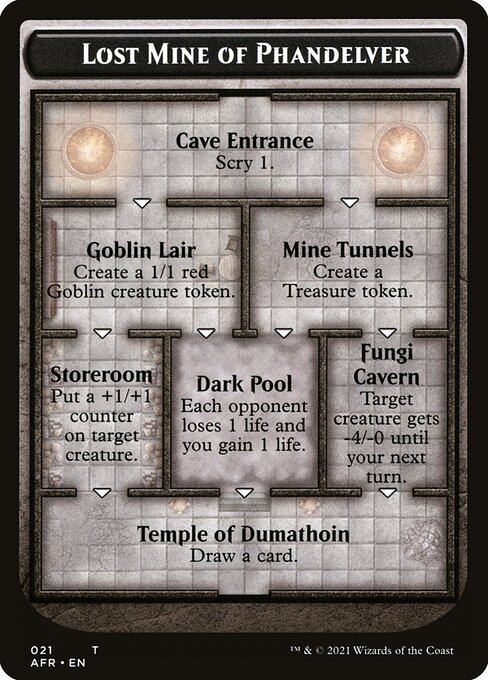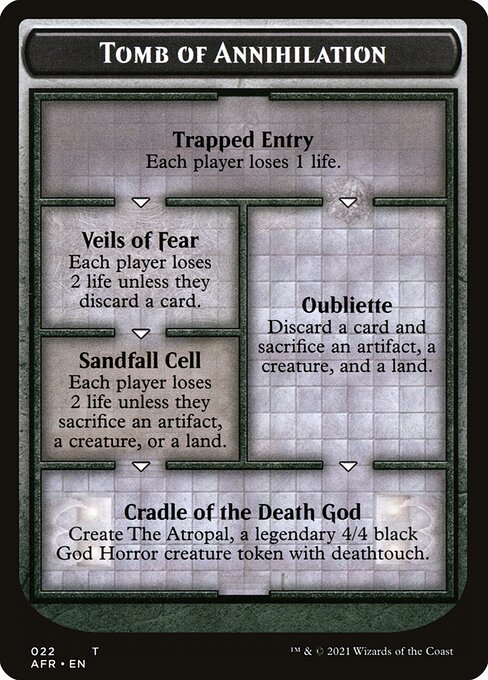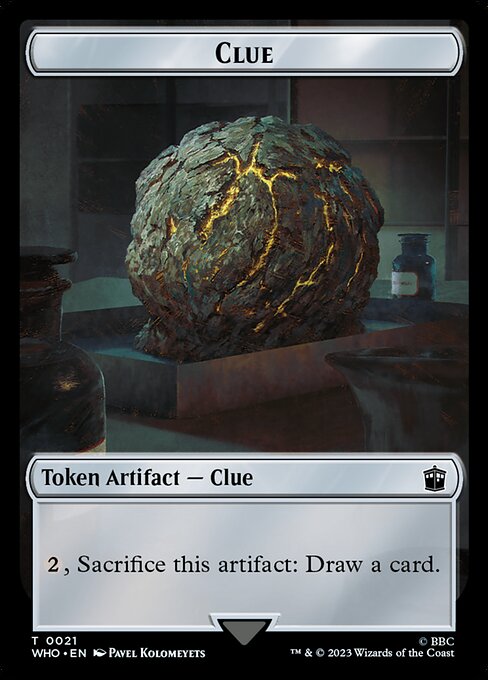Неподвижный Жезл
Артефакт
Вы можете решить не разворачивать Неподвижный Жезл во время вашего шага разворота.
Каждый раз, когда Неподвижный Жезл становится развернутым, углубитесь в подземелье.
, : пока Неподвижный Жезл остается повернутым, другой целевой перманент теряет все способности и не может атаковать или блокировать.
Каждый раз, когда Неподвижный Жезл становится развернутым, углубитесь в подземелье.
, : пока Неподвижный Жезл остается повернутым, другой целевой перманент теряет все способности и не может атаковать или блокировать.
standard
future
historic
gladiator
pioneer
modern
legacy
pauper
vintage
penny
commander
brawl
alchemy
paupercommander
duel
oldschool
premodern
Rulings
If you somehow venture into the dungeon while a room's ability is on the stack, you will continue on in the dungeon. If you're already in the last room, complete that dungeon and start a new one.
Moving into a dungeon room will cause its room ability to trigger.
If you target an Aura with Immovable Rod's last ability, it will lose its enchant ability and be put into its owner's graveyard because it can't legally enchant anything. An Equipment that loses its abilities loses its equip ability, so you won't be able to move it that way, but it will stay attached to the creature it's equipping, if any.
Choosing the dungeon or room to venture into is part of resolving the venture into the dungeon keyword action. Once that choice is made, players may not respond until after the appropriate room ability has triggered.
To venture into the dungeon, a player moves their venture marker into the next room of the dungeon they are currently in. If they aren't currently in a dungeon, that player instead chooses a dungeon card from outside the game, puts it into the command zone, and moves their venture marker onto the first room.
Some abilities still work even if they have been removed. Specifically, static abilities that change an object's types or change an object's colors will still apply even if those abilities are lost.
A player may only have one dungeon in the command zone at a time.
Dungeon cards are not part of a player's deck or sideboard. In both constructed and limited formats, players can use any dungeon card when they venture into the dungeon.
Once you resolve the last room ability of a dungeon, that dungeon is now completed and is removed from the game.
If a creature has a characteristic-defining ability that sets its power and/or toughness loses that ability, the power and/or toughness (as appropriate) become 0.
The player venturing into the dungeon chooses which dungeon they will venture into. They may choose a dungeon that they have already completed this game.
You can only move forward (well, downward) in a dungeon, never backwards or sideways.
Dungeons are removed from the game as a state-based action.
Moving into a dungeon room will cause its room ability to trigger.
If you target an Aura with Immovable Rod's last ability, it will lose its enchant ability and be put into its owner's graveyard because it can't legally enchant anything. An Equipment that loses its abilities loses its equip ability, so you won't be able to move it that way, but it will stay attached to the creature it's equipping, if any.
Choosing the dungeon or room to venture into is part of resolving the venture into the dungeon keyword action. Once that choice is made, players may not respond until after the appropriate room ability has triggered.
To venture into the dungeon, a player moves their venture marker into the next room of the dungeon they are currently in. If they aren't currently in a dungeon, that player instead chooses a dungeon card from outside the game, puts it into the command zone, and moves their venture marker onto the first room.
Some abilities still work even if they have been removed. Specifically, static abilities that change an object's types or change an object's colors will still apply even if those abilities are lost.
A player may only have one dungeon in the command zone at a time.
Dungeon cards are not part of a player's deck or sideboard. In both constructed and limited formats, players can use any dungeon card when they venture into the dungeon.
Once you resolve the last room ability of a dungeon, that dungeon is now completed and is removed from the game.
If a creature has a characteristic-defining ability that sets its power and/or toughness loses that ability, the power and/or toughness (as appropriate) become 0.
The player venturing into the dungeon chooses which dungeon they will venture into. They may choose a dungeon that they have already completed this game.
You can only move forward (well, downward) in a dungeon, never backwards or sideways.
Dungeons are removed from the game as a state-based action.
Rulings
If you somehow venture into the dungeon while a room's ability is on the stack, you will continue on in the dungeon. If you're already in the last room, complete that dungeon and start a new one.
Moving into a dungeon room will cause its room ability to trigger.
If you target an Aura with Immovable Rod's last ability, it will lose its enchant ability and be put into its owner's graveyard because it can't legally enchant anything. An Equipment that loses its abilities loses its equip ability, so you won't be able to move it that way, but it will stay attached to the creature it's equipping, if any.
Choosing the dungeon or room to venture into is part of resolving the venture into the dungeon keyword action. Once that choice is made, players may not respond until after the appropriate room ability has triggered.
To venture into the dungeon, a player moves their venture marker into the next room of the dungeon they are currently in. If they aren't currently in a dungeon, that player instead chooses a dungeon card from outside the game, puts it into the command zone, and moves their venture marker onto the first room.
Some abilities still work even if they have been removed. Specifically, static abilities that change an object's types or change an object's colors will still apply even if those abilities are lost.
A player may only have one dungeon in the command zone at a time.
Dungeon cards are not part of a player's deck or sideboard. In both constructed and limited formats, players can use any dungeon card when they venture into the dungeon.
Once you resolve the last room ability of a dungeon, that dungeon is now completed and is removed from the game.
If a creature has a characteristic-defining ability that sets its power and/or toughness loses that ability, the power and/or toughness (as appropriate) become 0.
The player venturing into the dungeon chooses which dungeon they will venture into. They may choose a dungeon that they have already completed this game.
You can only move forward (well, downward) in a dungeon, never backwards or sideways.
Dungeons are removed from the game as a state-based action.
Moving into a dungeon room will cause its room ability to trigger.
If you target an Aura with Immovable Rod's last ability, it will lose its enchant ability and be put into its owner's graveyard because it can't legally enchant anything. An Equipment that loses its abilities loses its equip ability, so you won't be able to move it that way, but it will stay attached to the creature it's equipping, if any.
Choosing the dungeon or room to venture into is part of resolving the venture into the dungeon keyword action. Once that choice is made, players may not respond until after the appropriate room ability has triggered.
To venture into the dungeon, a player moves their venture marker into the next room of the dungeon they are currently in. If they aren't currently in a dungeon, that player instead chooses a dungeon card from outside the game, puts it into the command zone, and moves their venture marker onto the first room.
Some abilities still work even if they have been removed. Specifically, static abilities that change an object's types or change an object's colors will still apply even if those abilities are lost.
A player may only have one dungeon in the command zone at a time.
Dungeon cards are not part of a player's deck or sideboard. In both constructed and limited formats, players can use any dungeon card when they venture into the dungeon.
Once you resolve the last room ability of a dungeon, that dungeon is now completed and is removed from the game.
If a creature has a characteristic-defining ability that sets its power and/or toughness loses that ability, the power and/or toughness (as appropriate) become 0.
The player venturing into the dungeon chooses which dungeon they will venture into. They may choose a dungeon that they have already completed this game.
You can only move forward (well, downward) in a dungeon, never backwards or sideways.
Dungeons are removed from the game as a state-based action.
Votre collection ? vos decks ?
Envie de gérer votre collection et/ou créer des decks ?
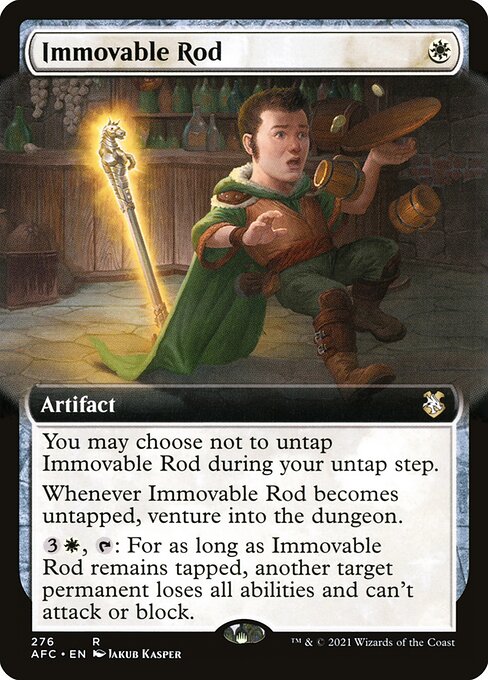
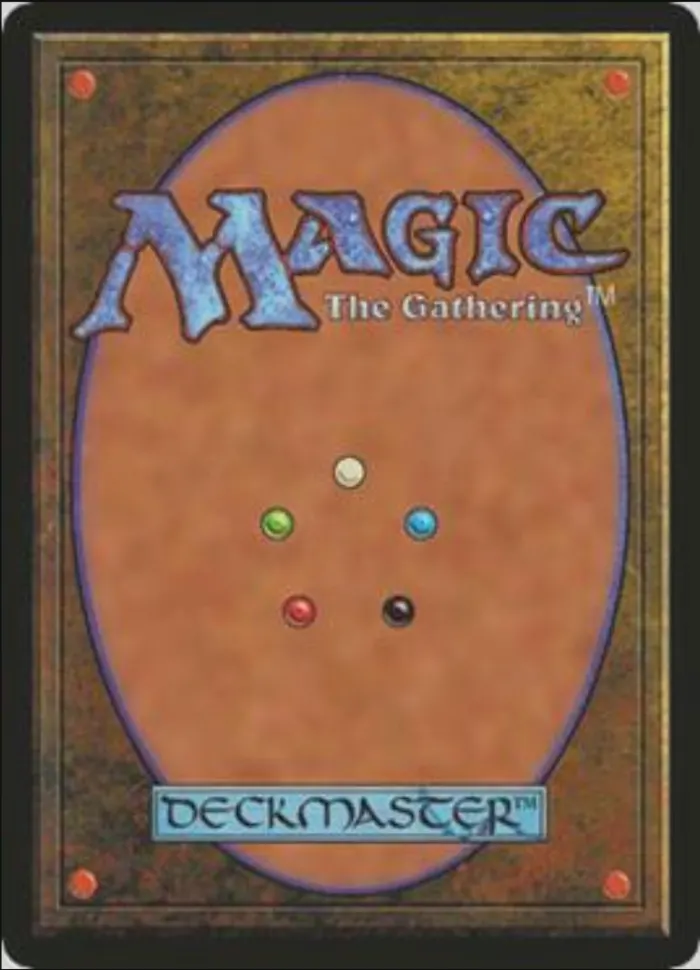
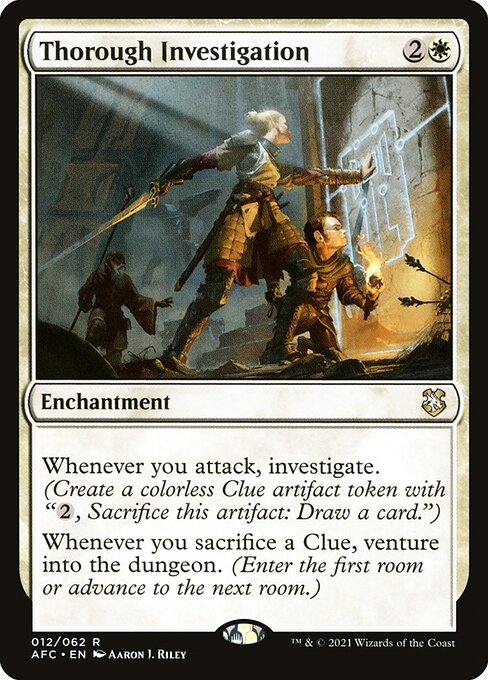

 2.84€
2.84€

